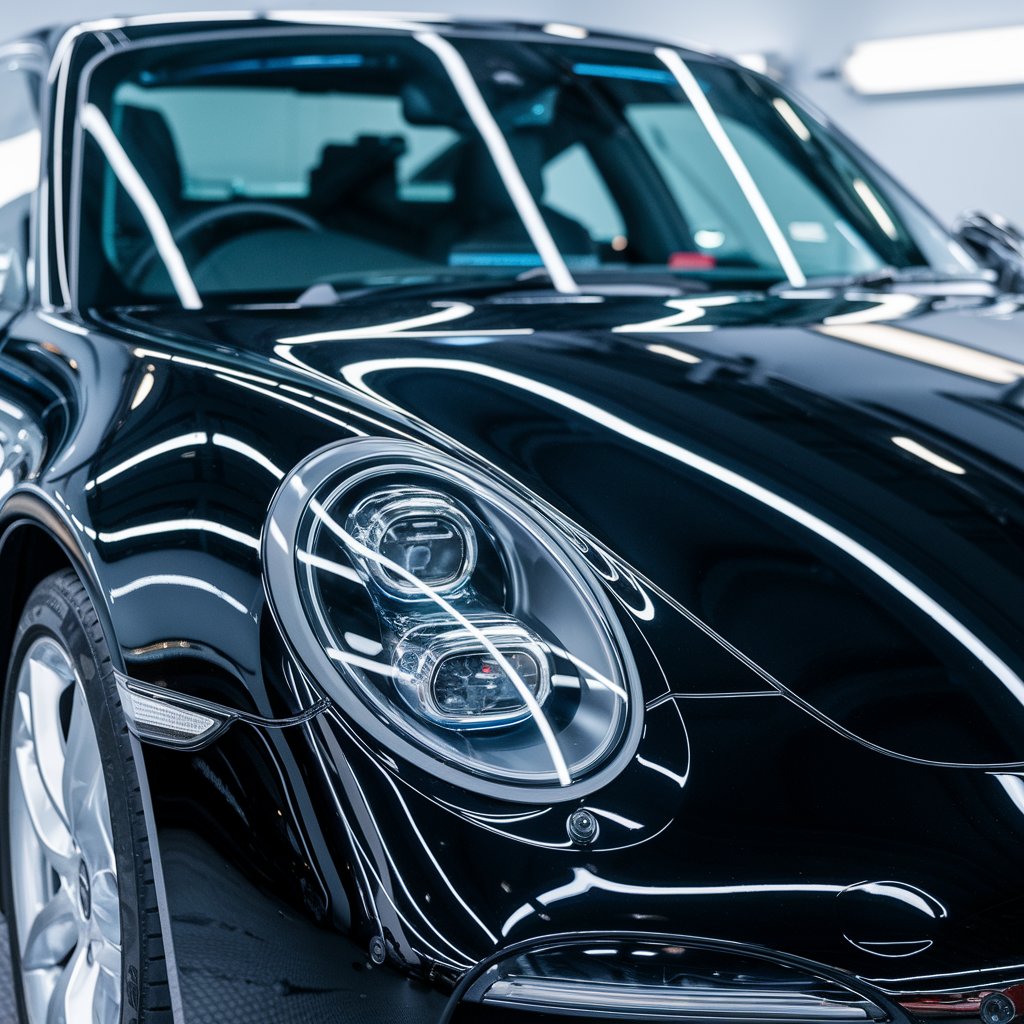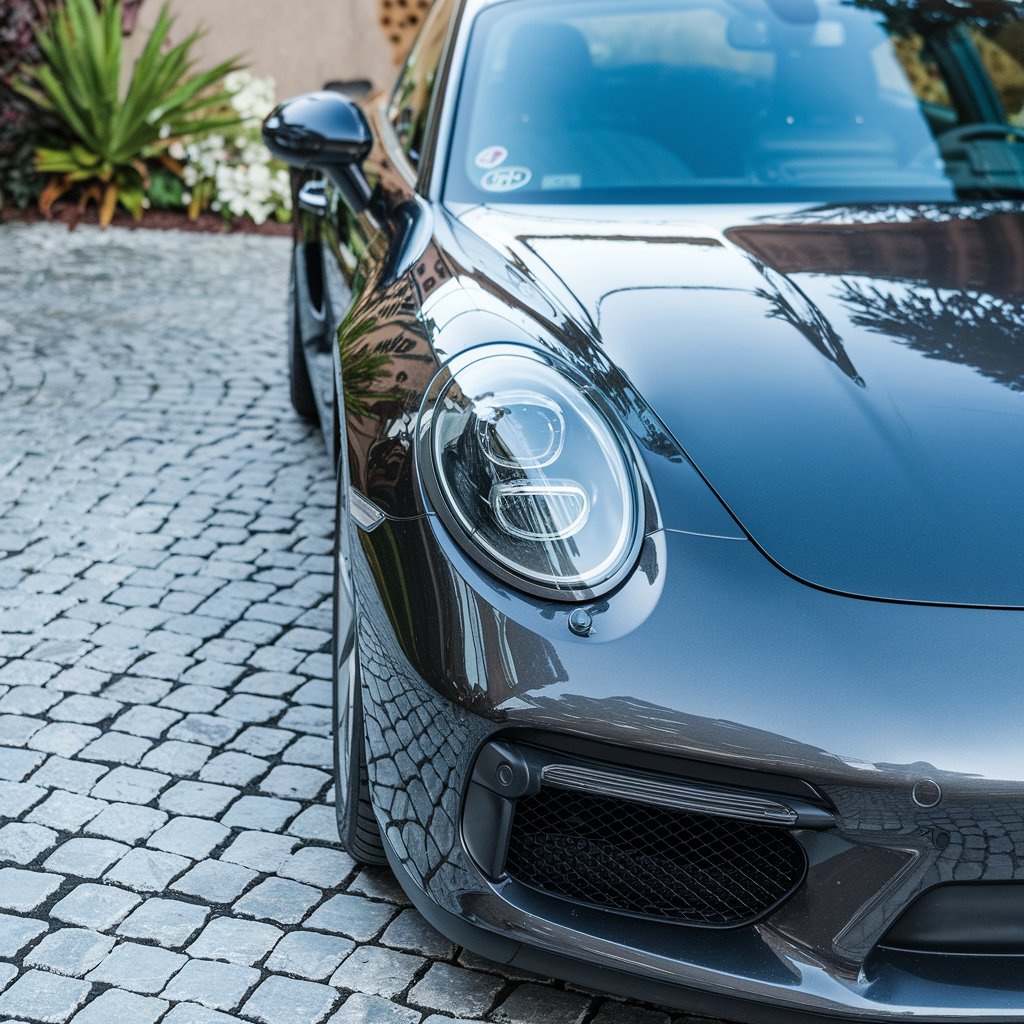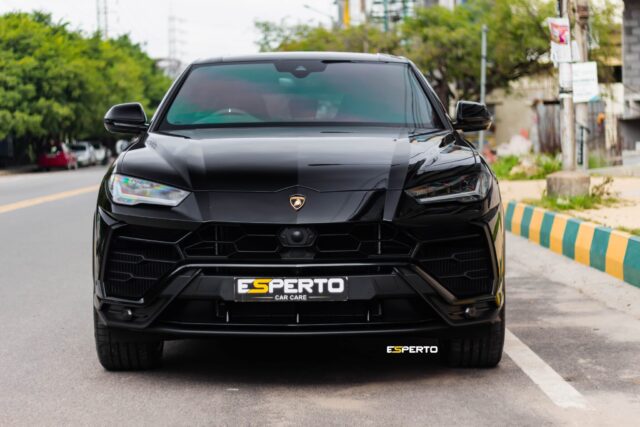In the automotive detailing industry, understanding the nuances between ceramic coating and nano coating is essential for informed decision-making. Ceramic coatings are renowned for their superior hardness and longevity, providing robust protection against UV damage and contaminants. Conversely, nano coatings excel in resisting micro-scratches and offer a self-healing effect. Choosing the right ceramic coating involves evaluating factors such as durability, maintenance, and environmental impact. This comparison isn’t just about protection; it’s about aligning with your car care priorities.
Key Takeaways
- Ceramic coatings offer superior hardness and scratch resistance, which are ideal for those prioritizing long-term protection and minimal maintenance.
- Nano coatings provide advanced self-healing properties and flexibility, suitable for users seeking enhanced aesthetic appeal and durability.
- Professional application of ceramic coatings ensures better precision, longevity, and hydrophobic properties than DIY methods.
- Nano coatings require less frequent reapplication but offer shorter-lasting protection compared to the more durable ceramic coatings.
- Environmental conditions significantly impact the application; ceramic coatings need controlled environments for optimal curing and performance.
What Are the Key Differences Between Ceramic Coating and Nano Coating?
Ceramic coating is a liquid polymer applied to vehicle surfaces, forming a chemical bond that enhances gloss and provides hydrophobic properties.
Meanwhile, nanocoating utilizes nanotechnology to create a thin, invisible layer that offers superior resistance to environmental contaminants.
The uniqueness of nano coating lies in its ability to integrate with the substrate at a molecular level, offering enhanced durability and self-healing qualities.
When comparing their protective properties, ceramic coatings excel in UV and chemical resistance, while nano coatings offer more advanced protection against micro-scratches and abrasion.
What is Ceramic Coating and How Does It Work?
A protective layer that enhances durability and aesthetic appeal on automotive surfaces, ceramic coating is a liquid polymer applied by hand to a vehicle’s exterior.
Comprising primarily of silicon dioxide, this coating chemically bonds with the car paint, creating a semi-permanent shield. The ceramic coating offers robust paint protection against ultraviolet (UV) rays, environmental contaminants, and minor abrasions, thereby extending the longevity of a vehicle’s finish.
Its hydrophobic properties repel water, reducing the accumulation of dirt and grime and simplifying maintenance.
- Scratch resistance: Provides a hardened surface that reduces the likelihood of minor scratches.
- UV protection: Shields car paint from harmful solar radiation, preventing oxidation and fading.
- Hydrophobic properties: Guarantees water beads off effortlessly, enhancing cleanliness and ease of maintenance.
What is Nano Coating and What Makes It Unique?
Nano coating, a cutting-edge advancement in surface protection technology, offers a unique formulation that distinguishes it from traditional ceramic coatings.
Utilizing technology that incorporates nanoparticles, nano coating forms a microscopic layer over the vehicle surface, establishing a robust chemical bond with the car paint. This bond provides superior car paint protection, shielding against environmental contaminants.
Unlike ceramic coatings, the molecular composition of nano coatings allows for an easy application process, making it accessible for car owners. The nanoparticles create a seamless, durable barrier that not only enhances the aesthetic appeal of the vehicle but also guarantees long-lasting protection.
The precision of nano coating technology delivers a high-performance solution for those seeking advanced protection and ease of use in car surface treatment.
How Do Their Protective Properties Compare?
Ceramic coatings are renowned for their superior hardness, providing a formidable shield against scratches and contaminants. They excel in protection and gloss, offering a high level of protection against UV rays and oxidation.
On the other hand, nano-ceramic coatings, a subset of ceramic coatings, deliver enhanced performance through their unique molecular structure, providing a denser barrier against environmental aggressors.
- UV Rays Protection: Both coatings protect against UV-induced oxidation, but nano-ceramics offer enhanced longevity.
- Scratch Resistance: Ceramic coatings offer superior hardness, reducing susceptibility to surface damage.
- Contaminant Repellence: Nano-ceramic coatings provide a tighter molecular structure, increasing resistance to contaminants.
How does nano coating differ from ceramic coating?
Nano coating and ceramic coating differ fundamentally in their application and structural composition.
Nano coatings are engineered at a molecular level to provide superior hydrophobic properties and heightened durability due to their dense, cross-linked network.
In contrast, ceramic coatings, while offering robust protection and gloss, lack the microscopic precision and adaptability inherent to nano-coating technologies.
Key differences between nano and ceramic coatings
While both nano and ceramic coatings serve as protective layers for vehicles, they differ markedly in composition, application, and performance characteristics.
The key differences between nano and ceramic coatings lie in their formulation and the scale of protection. Nano coatings utilize microscopic particles to create an ultra-thin layer, enhancing the ease of application and offering a versatile paint protection solution.
In contrast, ceramic coatings, thicker and more durable, require a professional application to guarantee peak results. Despite both lasting long, the debate on ceramic coating vs. nanocoating often hinges on specific needs for durability and application.
- Nano Coating: Offers ease of application with microscopic particles.
- Ceramic Coating: Professional application required for long-lasting durability.
- Protection Levels: Varies based on composition and application method.
The science behind nano-ceramic coating
Understanding the science behind nano-ceramic coatings requires examining their unique molecular structures and how these contribute to their protective properties.
Nano-ceramic coatings are composed of nanoparticles that include silica, which forms a porous, yet durable layer on automotive surfaces. This composition allows for long-lasting protection and enhanced gloss, setting them apart from traditional ceramic coatings.
The nano-sized particles interlock to create a robust matrix that offers superior protection against minor abrasions and environmental contaminants. By employing nanotechnology, these coatings achieve ideal adhesion and coverage, ensuring the best results.
The silica-based structure enhances the coating’s hydrophobic properties, minimizing water spots and dirt accumulation.
The microscopic advantages of nano coating
The exploration of nano-ceramic coating science naturally leads to a closer examination of how nano coatings distinguish themselves from traditional ceramic coatings at a microscopic level.
Nano coatings utilize nanoparticles that form a highly dense, cross-linked structure on the paint surface. This structure provides better protection against contaminants, enhancing car care by effectively sealing microscopic paint imperfections. The result is a glossy finish that not only enhances aesthetics but also offers superior durability.
- Nano ceramic coating creates a hydrophobic layer, reducing water spots and chemical stains.
- Nanoparticles allow for better adhesion to the paint surface, ensuring long-lasting performance.
- The microscopic advantages of nano coatings include increased resistance to UV rays, oxidation, and environmental pollutants.
These attributes make nano coatings a superior coating product choice.

Which coating is best for your car’s paint protection?
In determining the ideal paint protection solution, it is essential to assess the comparative scratch resistance and gloss retention properties of each coating type.
Additionally, one must consider the coating’s efficacy in safeguarding against environmental contaminants and UV radiation, which can degrade paintwork over time.
The decision is further influenced by factors such as application longevity, maintenance requirements, and cost-effectiveness, all of which play significant roles in selecting the most suitable protective layer for a vehicle’s finish.
Factors influencing the choice of paint protection solutions
The decision between ceramic coating vs nano coating depends on several critical factors. When protecting your car’s paint, consider whether the coating is best for specific needs, such as resistance to contaminants or ease of paint correction. Each type of coating utilizes nanoparticles to form a protective layer over the car’s surface, with varying durability and longevity.
For instance, ceramic coatings for cars often boast a 9H hardness rating, providing robust protection.
- Longevity and Durability: Determine how long the coating should last while maintaining effectiveness.
- Application and Maintenance: Evaluate the ease of application and required upkeep.
- Environmental Conditions: Consider the local climate and potential exposure to contaminants.
Evaluating scratch resistance and gloss in coatings
Evaluating scratch resistance and gloss in coatings is pivotal in determining the best solution for automotive paint protection.
In the ceramic coating vs nano coating debate, ceramic coating for cars is often considered the finest due to its superior scratch resistance and ability to protect the paint. This coating can make a significant difference by reducing swirl marks and providing a durable shield against environmental contaminants.
Nano and ceramic coatings both enhance gloss; however, the latter is renowned for delivering a deep, reflective shine. The durable layer of ceramic coating not only protects the paint but also maintains aesthetic appeal over time.
Consequently, discerning consumers seeking high gloss and robust scratch protection may find ceramic coatings to be the best choice for their vehicles.
Considering environmental contaminants and UV rays
They accelerate the degradation of a car’s paint, leading to oxidation, fading, and surface etching. A ceramic coat or nano coating acts as a defense mechanism against these threats.
- Ceramic vs Nano: Ceramic coatings offer robust protection against UV rays and environmental contaminants like bird droppings, while nano coatings provide advanced hydrophobic properties, reducing reapplication frequency.
- Durability: Ceramic coatings typically last longer, requiring less frequent maintenance to clean and maintain the car’s paint.
- Protection Level: Nano coatings excel in providing a slick surface and preventing dirt adhesion but may not match the UV protection of a ceramic coating.
Selecting between coatings depends on specific environmental exposure and desired maintenance frequency.
Can nano coating enhance your car’s longevity?
Nano-ceramic coatings can greatly extend a vehicle’s lifespan by forming a durable, protective barrier against environmental contaminants and UV radiation. This advanced protection is due to the coating’s hydrophobic properties, which repel water and prevent the adherence of dirt and grime, thereby minimizing surface damage. While some users consider applying wax over ceramic coating for added gloss, it’s important to note that nano coatings already provide superior protection and durability. Additionally, the longevity of nano coatings surpasses traditional waxes and sealants, offering sustained defense that reduces the frequency of maintenance and potential paint degradation.
The longevity of nano-ceramic coatings
As automotive enthusiasts and experts explore the myriad options available for vehicle protection, the role of nano-ceramic coatings in enhancing a car’s longevity has garnered considerable attention.
Nano-ceramic coatings, composed of advanced polymers, create a robust barrier against environmental contaminants, thereby prolonging the vehicle’s exterior lifespan. These coatings, when applied correctly, tend to last markedly longer than traditional waxes, offering years of protection rather than months.
- Different products in the market provide varying degrees of durability, necessitating careful selection for those seeking the best for their car.
- While some coatings require more frequent applications, nano-ceramic solutions offer a longer-lasting alternative.
- The longevity of these coatings is influenced by factors such as application techniques and environmental conditions, emphasizing the importance of professional installation.
How a nano coating can offer better protection
By integrating advanced chemical formulations, nano coatings provide superior protection by forming an ultra-thin, yet highly resilient layer over a vehicle’s surface. This protective coat acts as a formidable shield, protecting against environmental contaminants like UV rays, bird droppings, and acid rain.
The difference between nano and ceramic coatings lies in their molecular structure; nano coatings offer enhanced durability and flexibility, adapting to the paint surface’s micro-level imperfections. In contrast, ceramic coating forms a thicker, rigid shield, which offers substantial protection but lacks the adaptability of nanotechnology.
While ceramic coating provides a strong defense, nano coatings deliver superior protection by mitigating potential damage more effectively. Consequently, in the nano vs ceramic coating debate, nano coating is another advanced option for extending vehicle longevity.
Impact of hydrophobic properties on car paint protection
Hydrophobicity, a defining feature of nano coatings, greatly enhances a vehicle’s longevity by creating a water-repellent barrier.
This property minimizes water spots and prevents contaminants from adhering to the surface, thereby reducing oxidation and corrosion risks. Nano coatings utilize advanced polymers that bond chemically with the car’s paint, forming a resilient protective layer.
- Self-Cleaning Effect: The hydrophobic surface causes water to bead and roll off, carrying away dirt and grime, reducing maintenance efforts.
- UV Resistance: By mitigating the impact of harmful ultraviolet rays, nano coatings prevent paint fading and degradation, ensuring aesthetic longevity.
- Chemical Resistance: Enhanced protection against acidic contaminants such as bird droppings and bug splatter, preventing etching and staining on the paint surface.
Is a ceramic coat easy to apply to your vehicle?
Applying a ceramic coating involves meticulous surface preparation, precise application techniques, and curing time management.
Common challenges include achieving an even coating layer, preventing high-spot formation, and ensuring ideal environmental conditions during application.
While do-it-yourself kits offer accessibility, professional application services provide expertise in overcoming these challenges, ensuring superior results.
Steps to apply a ceramic coating
Ceramic coating a vehicle involves a meticulous process that, when executed properly, enhances the vehicle’s appearance while providing robust protection.
The application begins with a thorough decontamination of the vehicle’s surface, employing techniques such as clay bar treatment to remove embedded contaminants. Following this, the paint undergoes meticulous correction to eliminate existing imperfections. Whether it’s for a freshly purchased model or an older vehicle, new car ceramic coating ensures the best possible foundation for protection.
Once the surface is pristine, the ceramic coating is applied with precision, often using an applicator pad and guaranteeing even coverage.
- Surface Preparation: Involves washing, decontamination, and paint correction to facilitate ideal bonding.
- Application Technique: Utilizes cross-hatch patterns for uniform coverage, avoiding streaks and high spots.
- Curing Process: Requires controlled environmental conditions to allow the coating to bond and harden effectively.
Each step is essential to achieving a durable, high-gloss finish.

Common challenges in ceramic coating application
While the allure of a glossy, protective finish is enticing, achieving a perfect ceramic coating application poses several challenges that can deter even seasoned enthusiasts.
Surface preparation is paramount; Contaminants like grime, tar, or leftover wax need to be thoroughly cleaned away to prevent adhesion failure. Even minor surface imperfections can become amplified under the coating, necessitating thorough paint correction.
Environmental conditions also play a critical role; factors like ambient temperature and humidity can affect curing times and final results. Additionally, consistent thickness is essential to avoid uneven protection or aesthetic anomalies.
The application process itself demands precision, with time-sensitive steps requiring swift, accurate execution. Without professional-grade tools and controlled environments, achieving an ideal ceramic coat remains a technically demanding task.
DIY vs professional ceramic coating application
For automotive enthusiasts weighing the options between DIY and professional ceramic coating applications, understanding the nuances of each approach is essential.
DIY ceramic coating kits offer affordability and convenience, enabling car owners to apply protective layers at home. However, achieving ideal results requires meticulous surface preparation, including decontamination and polishing.
Professional application, on the other hand, guarantees precision and expertise, often utilizing advanced tools and controlled environments to achieve superior durability and gloss.
- Surface Preparation: DIY applications demand thorough cleaning, clay bar treatment, and paint correction to guarantee adhesion.
- Skill Level: Professional installers possess technical expertise, reducing the risk of application errors such as streaks or high spots.
- Longevity and Performance: Professionally applied coatings typically offer extended longevity and enhanced hydrophobic properties due to precise application methods.
Conclusion
To summarize, both ceramic and nano coatings offer distinct advantages tailored to specific needs. Ceramic coatings provide robust, long-lasting protection with superior hardness against UV rays and contaminants, suitable for environments demanding durability. Conversely, nanocoating’s excel in micro-scratch resistance and feature a self-healing effect, which is ideal for those prioritizing aesthetic maintenance. The choice hinges on factors such as desired longevity, maintenance frequency, and prevailing environmental conditions, necessitating a careful assessment of these variables to optimize vehicle protection.







